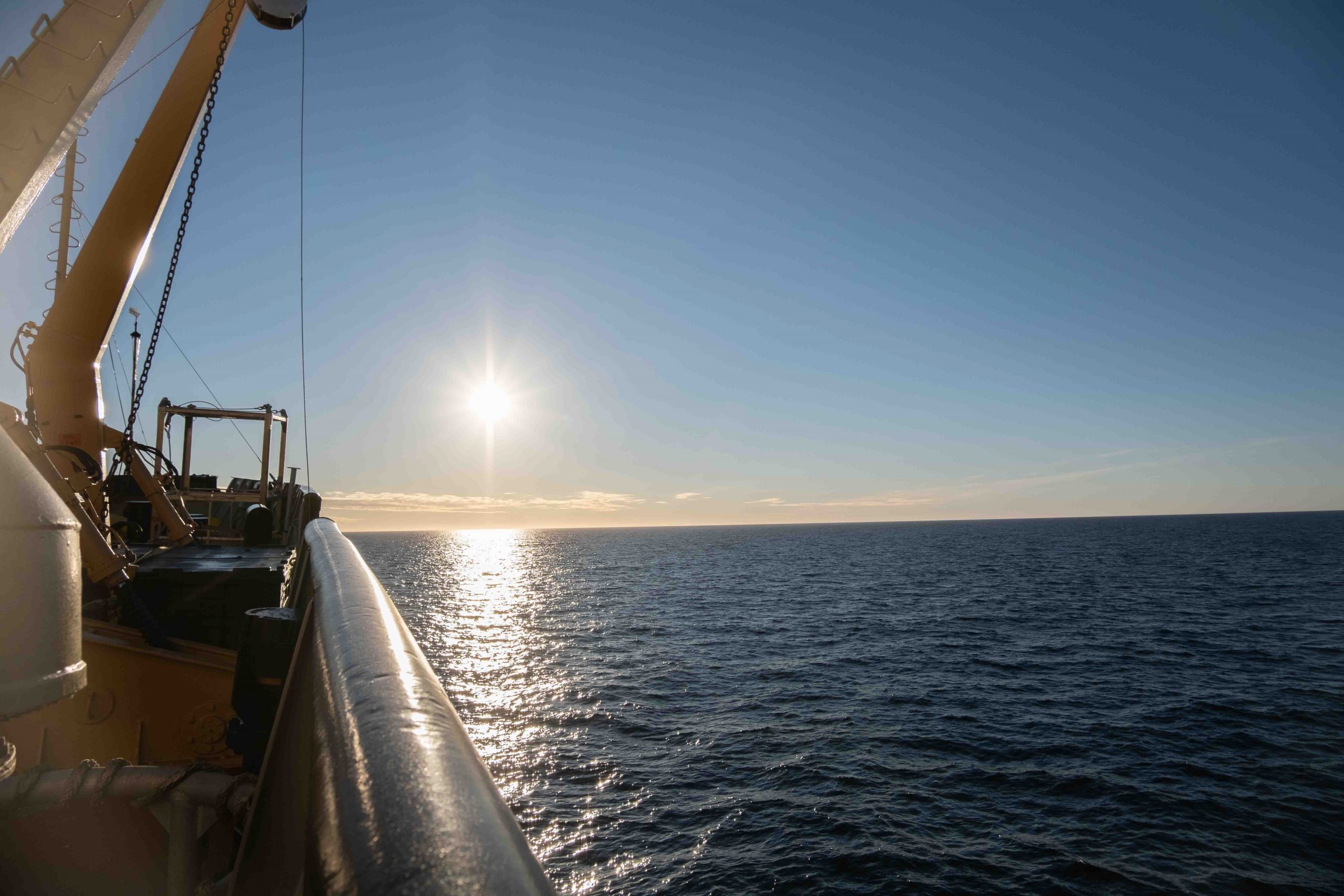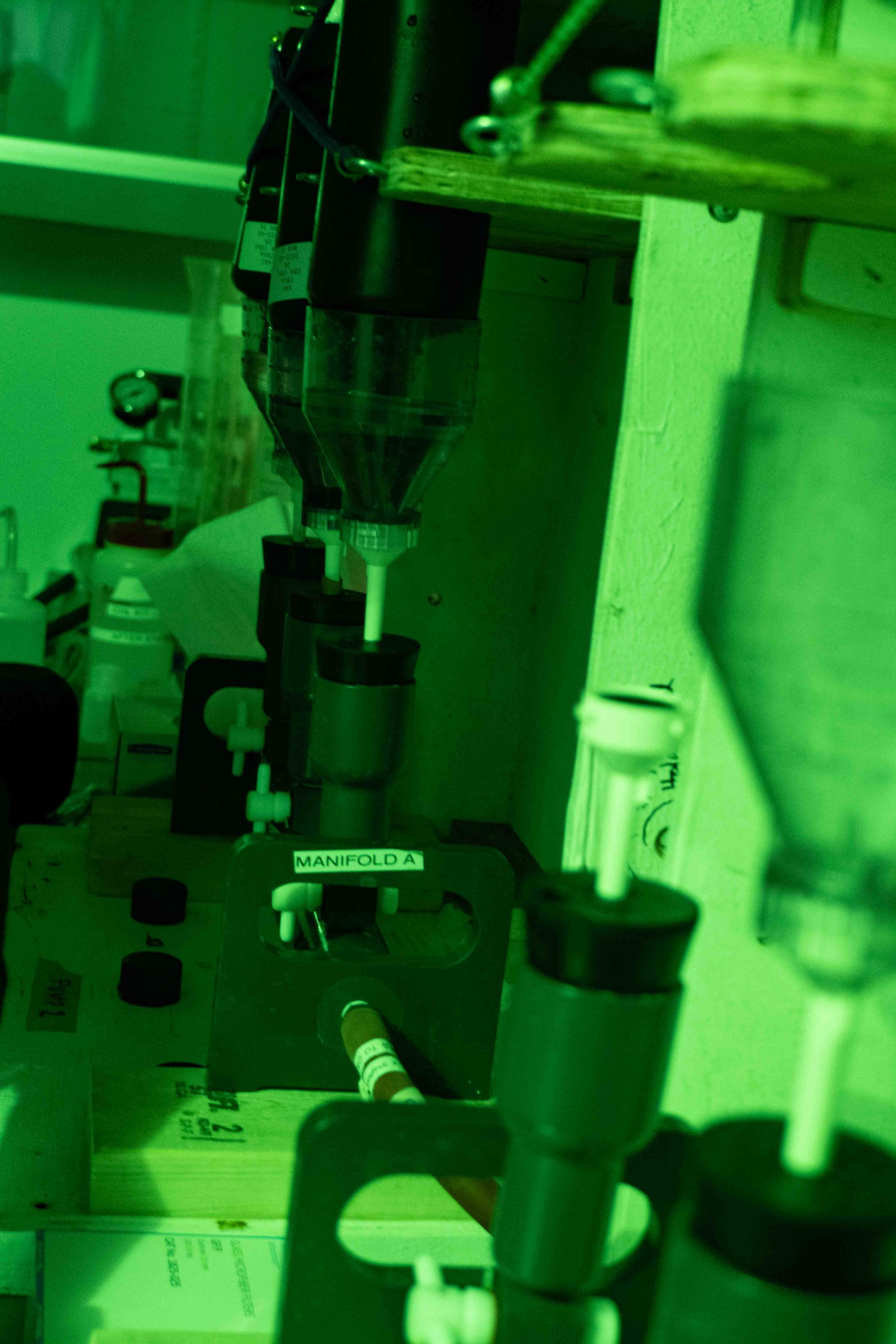Dispatch 18: Cruising along the Coast
Elizabeth Bailey
October 3, 2022
This morning the Louis S. St-Laurent left the ice pack for the first time in over two weeks. Why? We will be beginning our coastal water sampling. Tonight, we will tackle the Barrow Line – a series of CTD stations over the continental shelf just west of Utqiagvik (Barrow), Alaska. Along with the Mackenzie Line (which will be the last of our scientific activities), these two transects along the continental shelf are all of the coastal sampling we do. These stations have a wide range in depths, from about 100 to 3000 meters deep! For the most part these stations are relatively close together (about 18 km compared to our typical distance between stations of around 100 km) and are our most intense sampling days that occur during the expedition, as there are CTD casts and many samples to collect from the Rosette. In addition, zooplankton nets will also be deployed at most of the stations and additional water will be collected for lithogenic isotope sampling (see Dispatch 7).
Coastal sampling is vastly important in general as coastal regions are often a hot spot for biological productivity where rivers serve as a source of nutrients for the ocean. In the Beaufort Gyre, rivers are also a primary source of freshwater (along with sea ice melt and relatively fresh water inflowing from the Bering Strait). So, when trying to understand future changes to the Beaufort Gyre’s freshwater content (the importance of which was discussed in Dispatch 2), these coastal sampling lines are incredibly important as they allow us to capture how the freshwater is distributed all the way to the coastal margins of the system.
In addition to understanding the physical influence of river input, many of the science team are also interested in the biological activity in this part of the Canadian Basin. As for how we sample that, at every CTD cast zooplankton samples are collected from a bongo net and other water column properties are sampled in water taken from the Rosette (as discussed in dispatch 3).
What do we do with these water samples? For phytoplankton, the first step after collecting a water sample is filtering it through filter paper. Then in a lab on shore, chlorophyll-a (i.e., xxx) is extracted from the filter paper with acetone and run through a fluorometer. In the fluorometer, there is a flash of blue light, which excites the phytoplankton and causes them to emit red light that is detected by the instrument. This process tells us the concentration of phytoplankton that was in the original seawater sample. What we do with other water samples that impact biological productivity, in particular nutrient concentrations, will be discussed in a future dispatch!
After we finish the Barrow line, we will head back into the ice to recover the last mooring and deploy a new one (along with some more CTD stations here and there). Overall, we’re all looking forward to our last few days in the ice pack!


